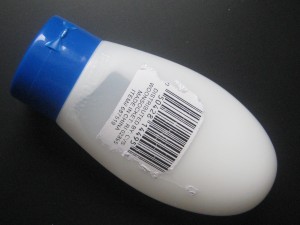Here is a great project for your copywriting class or inhouse brainstorming session: give everybody five minutes to write the best possible Twitter bio, which has to be 160 characters or less, including spaces.
Your Twitter bio is what shows up in another user’s inbox when you follow them and they make a split second decision about whether to follow you in return. The New York Times had a nice sidebar piece in which they join Slate and the Washington Post in anointing Hillary Clinton’s bio a superb example of the craft:
Wife, mom, lawyer, women & kids advocate, FLOAR, FLOTUS, US Senator, SecState, author, dog owner, hair icon, pantsuit aficionado, glass ceiling cracker, TBD …
It states her qualifications, though not in a pompous way. It veers off into some relevant light touches (Hilary’s lack of hair savvy and her predilection for pantsuits are well known non-presidential attributes) which are amusing without being frivolous.
A bio like that promises that the tweets also will be interesting, and that you may meet other cool folk by following her. It’s much more effective than a straightforward statement of qualifications, or an unabashedly promotional bio like the one Lady Gaga is currently running: BUY MY NEW SINGLE ‘APPLAUSE’ AND PRE-ORDER MY ALBUM ‘ARTPOP’ HERE NOW!
Before writing this post I checked my own neglected bio for @otisregrets and found it pretty terrible:
Results-focused ad copywriter; blogger about writing, marketing, customer service, technology and more.
I gave myself the five minutes and came up with:
I write direct response ads, web pages, emails, direct mail & whatnot. Gold Echo & Caples Silver Cup winner. Guilty pleasure: streaming bluegrass videos at work.
Some work qualifications hopefully written in a casual way… but I don’t like the personal aside because it might imply to some that I bill for time when I’m actually not working. (I don’t.) So I tweaked it to:
I write results-oriented ads, web pages, emails, direct mail & whatnot. Gold Echo & Caples Silver Cup winner. Read my blog for marketing tips & off-topic rants.
The blog’s a good call to action since that is indeed where I want the reader to go next, and the throwaway about “off topic rants” will hopefully garner curiosity. I’m sure I can do better but I only had 5 minutes. Let me know how you do on your bio.

